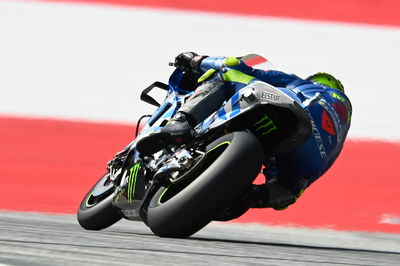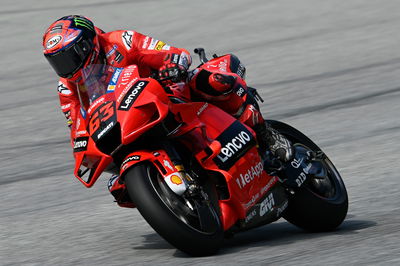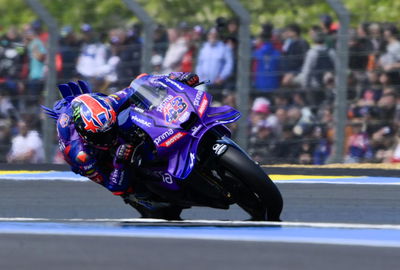Styrian MotoGP: 'Huge difference' as Suzuki debuts rear ride-height device

Suzuki finally joined the other MotoGP manufacturers in having a rear ride-height device, to help with race starts and hard acceleration elsewhere around a lap, on Saturday morning in Austria.
From the first impression of the 'prototype' it was definitely worth the wait, with reigning world champion Joan Mir speaking in glowing terms about the device.
”With and without is a HUGE difference: with the device the bike wheelies a lot less, I have less of a physical struggle to keep the front down and I feel more push in the acceleration," said Mir, who set the fifth fastest lap time, just0.273s from Ducati's Francesco Bagnaia.
"This will probably allow us to play more with the electronics too. Considering it’s just the first prototype I feel that Suzuki already did a very good job.”
On the other side of the garage team-mate Alex Rins could only manage 13th place (+0.562s) in FP2 and will need to battle through Qualifying 1.
Rins also felt the device is already functioning well, especially on the crucial 'release' under braking, but still needs to get used to the system.
“I need to get used to it to find the perfect coordination between acceleration and lever activation," Rins said.
"This is not a problem because it will come with some more experience and we can finalise the set-up of this device; this is just the very first prototype.
"At the same time the comeback in the next braking zone when the rear has to return to its normal height is very smooth and makes me feel comfortable to brake as normal.”
Rins was the first to spot that Ducati had evolved its original holeshot system for repeated use during the rest of the lap while battlling Jack Miller in the 2019 Malaysian MotoGP race.
"I was the first to see it and I was thinking, 'he broke his rear shock or what?!'" Rins joked, referring to the back of Australian's bike squatting down on the straights.
Like its rivals, Suzuki already has a front holeshot device for the race start.












